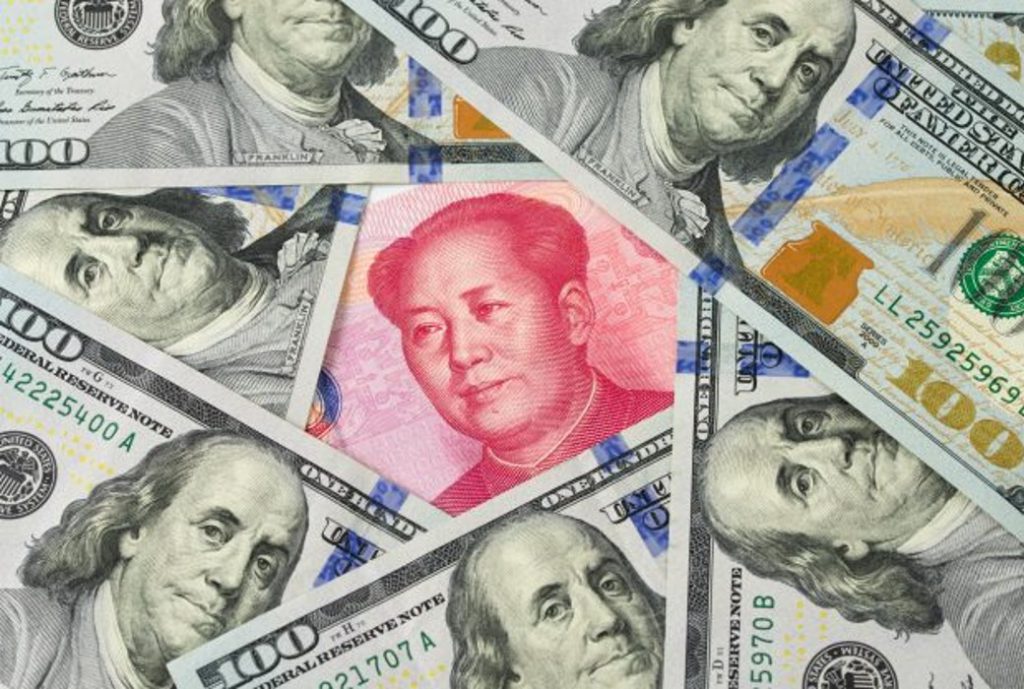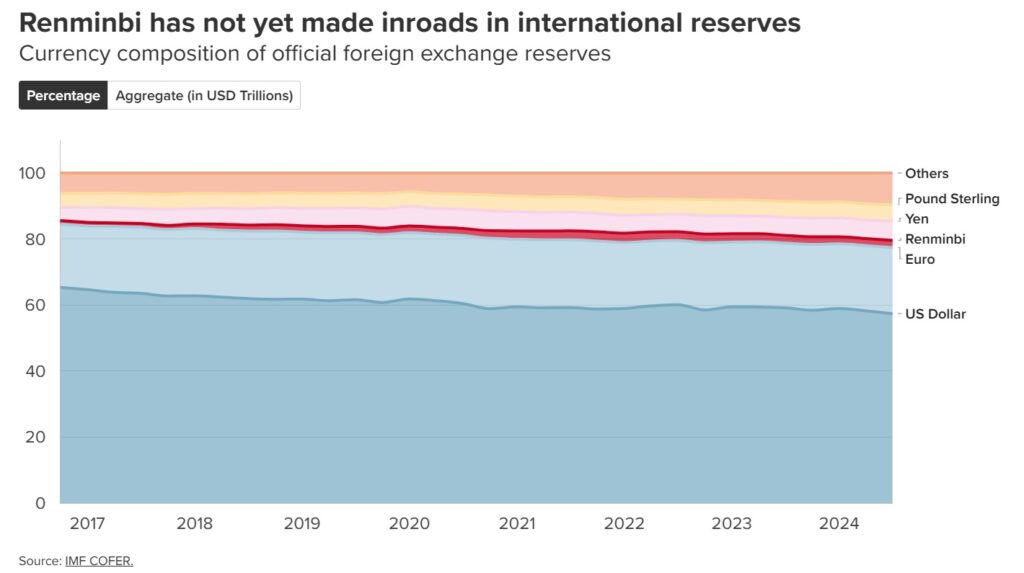BRICS: Assessing the Chinese Yuan’s Penetration into Global Reserve Currencies
As of April 2025, the Chinese Yuan (CNY) has demonstrated notable progress in establishing itself as a viable reserve currency within the BRICS economic bloc and beyond. This analysis examines the extent to which the Yuan has been integrated into central bank reserves worldwide, the driving factors behind its adoption, and the challenges it faces in competing with traditional reserve currencies like the USD and EUR. Key considerations include China’s economic policies, international trade agreements, and the currency’s performance in global forex markets.
BRICS: Chinese Yuan Made Inroads In International Reserves?

The latest data from The Atlantic Council shows that the Chinese yuan has not made any major inroads in international reserves. Though its usage has slightly increased, it does not create any impact or threaten the dominance of the US dollar. Even BRICS countries are now hesitant to use the Chinese yuan for trade as they believe the Communist nation is using the alliance as a stepping stone for world domination.

BRICS member India stepped back from using the Chinese yuan after settling many trade deals in the currency. The Modi government does not want to promote or use the currency as it can make China much stronger. India and China have been at loggerheads for several decades due to border and trade disputes. Therefore, using their local currency will only empower the opposition and make India look weaker.
The Chinese yuan has a long way to go to even challenge the dominance of the US dollar. Other leading currencies like the euro and pound are yet to dent the USD’s prospects despite being second and third in line. BRICS has little to no chance of making the Chinese yuan reign supreme in the coming decades.

